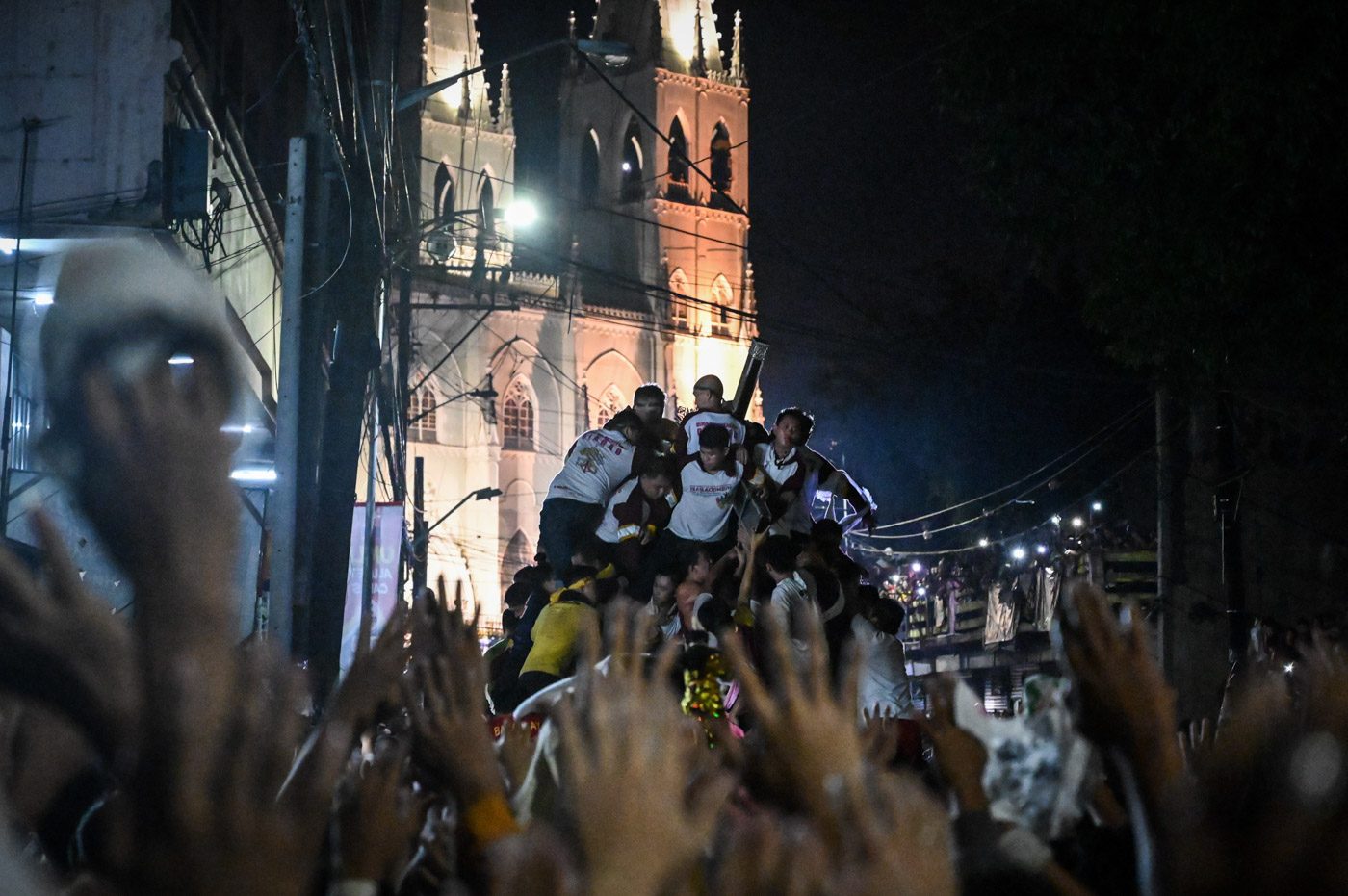SUMMARY
This is AI generated summarization, which may have errors. For context, always refer to the full article.

MANILA, Philippines – Police are looking at quickening the pace of the yearly Traslacion of the Black Nazarene Catholic icon in Manila on January 9, after the crowd management of a similar procession past midnight Tuesday reduced it by almost 9 hours.
The Black Nazarene Thanksgiving Procession that started at about 11:45 pm on Monday, December 30, completed its route in one hour and 45 minutes at about 1:30 am on Tuesday, December 31. The same procession in 2018 took 10 hours and 22 minutes, said the National Capital Region Police Office (NCRPO) on Wednesday, January 1.
Security forces and officials of the Quiapo Church in Manila, the icon’s basilica, implemented a “new security scheme” that addressed the usual overcrowding of the procession, which drew a crowd of at least 70,000 devotees on Monday night, the NCRPO said.
“Taking into account that the enhanced security approach for the thanksgiving procession has been effective, the same security blueprint might be implemented for the Traslacion of the Black Nazarene from Quirino Grandstand to Quiapo Church in Manila on January 9,” said NCRPO acting director Brigadier General Debold Sinas.
Approximately 10,000 personnel from the NCRPO, Joint Task Force NCR, the Bureau of Fire Protection, the Bureau of Jail Management and Penology, the Philippine Coast Guard, Task Force Quiapo, and other “force multipliers” were deployed to places of convergence and vital locations near Quiapo Church, and throughout the procession’s route, Sinas added.
The Traslacion draws millions of devotees every year as it winds its way through the streets and alleys of downtown Manila. Droves of participants jostle one another to touch or at least catch a glimpse of the icon, while spectators pack every open space along the procession’s route. All these slow the procession down, at times requiring the icon’s carriage to halt as devotees try to clear a way for it through the throng.
The Traslacion in 2019 lasted 21 hours.
In 2012, the Traslacion took over 22 hours as the carriage bearing the statue lost it wheels. The Black Nazarene’s image entered Quiapo Church just as the 6 am Mass was about to start.
The centuries-old tradition presents major safety and security risks, but it has been carried out generally peacefully over the years. – Rappler.com
Add a comment
How does this make you feel?
There are no comments yet. Add your comment to start the conversation.